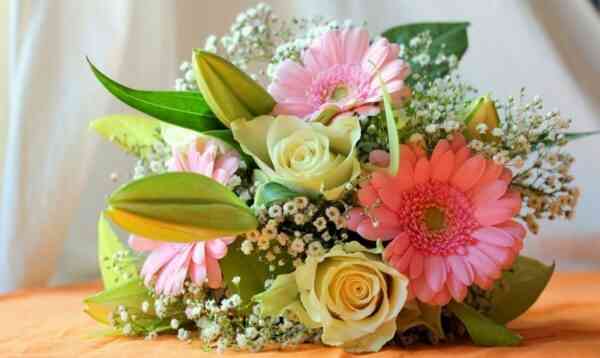Beautiful flowers have been decorating homes for many centuries, they are used as a gift, designed to express attention, and even adorn their clothes and hair. And biologists admire their diversity, the most interesting properties of some species and the complete uniqueness of others. The life span of some of them is very short, but bright and beautiful, like creation itself.
Interesting facts about flowers
- All the processes of sexual and asexual reproduction of angiosperms take place in flowers.
- The smallest flowers can be seen on the ponds, near the common duckweed. Their diameter does not exceed 1 mm. And the largest, Rafflesia Arnold, grows in Indonesia, and its diameter exceeds 90 cm and weighs up to 11 kg (interesting facts about Indonesia).
- The name forget-me-not has the same meaning in all major European languages.
- The world’s largest flower, Amorphophallum titanum, also grows in Indonesia. It reaches a height of 3 meters.
- In the Middle Ages there was a real language of flowers. So, with the help of a rose with myrtle, the noble knight made it clear that he was asking the lady for a hand and heart, and a branch of cherry with a flower meant a declaration of love. This “flower language” is called “selam” (interesting facts about the Middle Ages).
- The most expensive flower in the world is the Malaysian golden orchid. It blooms for the first time only at the age of 15.
- In Germany, in the city of Hildesheim, the oldest flowers in the world grow. The rose bush near the local cathedral is over a thousand years old.
- Real mimosas are lilac, not yellow. The yellow ones, which are commonly called mimosas, are the silver locust.
- People began to grow flowers in gardens about 4 thousand years ago. The most ancient gardens, as far as we know, were equipped by the ancient Egyptians.
- Flowers are present on the coats of arms of many countries – Switzerland, the Netherlands, Ireland, Iran and many others (interesting facts about Iran).
- In the US, each state has its own flower symbol.
- Some types of flowers are quite edible. For example, jams and even salads are made from dandelions prepared in a special way.
- There are no black flowers in the world. There are no whites either – those that appear to be are actually just colorless.
- An amazing flower grows in the mountains of South America that blooms only once in life, and only after reaching the age of about 150 years.
- In Japan, chrysanthemums are considered imperial flowers, and one of the highest state awards is called the Order of the Chrysanthemum (interesting facts about Japan).
- In China, peonies are believed to ward off evil spirits. By the way, these flowers got their name in honor of the legendary doctor Pean, who, according to legend, even healed the gods.
- Some flowers are surprisingly tenacious. One type of wild rose grows even near the Arctic Circle.
- Tulip flowers for the first time after their appearance in Europe were worth their weight in gold.
- Now the Netherlands is famous for its tulips, but few people know that these flowers were brought to their country by the Dutch only in the 16th century from Turkey (interesting facts about Turkey).
- Bees can distinguish flowers with and without nectar
- In India, flowers are often used in sacrificial rituals – they are burned in a sacred fire.
- All bluebell flowers are always directed downwards to protect their tender inside from the rain.
- The first plant to bloom in space was Arabidorpis. He was brought to the Soviet orbital station «Salyut-7» in 1982 for experimental purposes (interesting facts about space).
- The amazing Australian orchid risentella does not give a flower on the surface, but underground. It is even pollinated by beetles, not bees.
- People have bred about 50 thousand species of roses, all of which come from wild rose hips.
- The number of petals in a rose flower varies from 5 to 128.
- It has been experimentally proven that flowers react differently to different people, depending on how they treat them.
